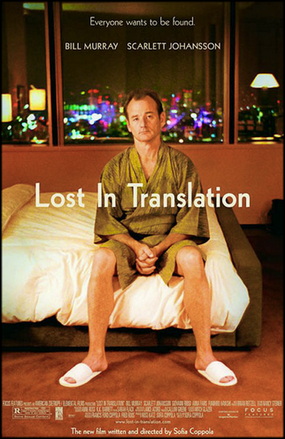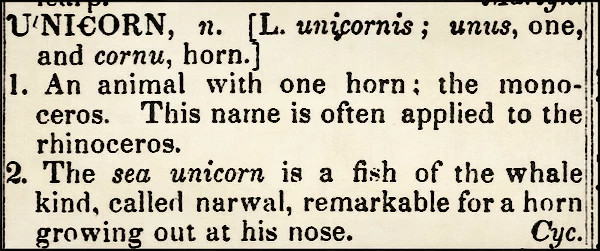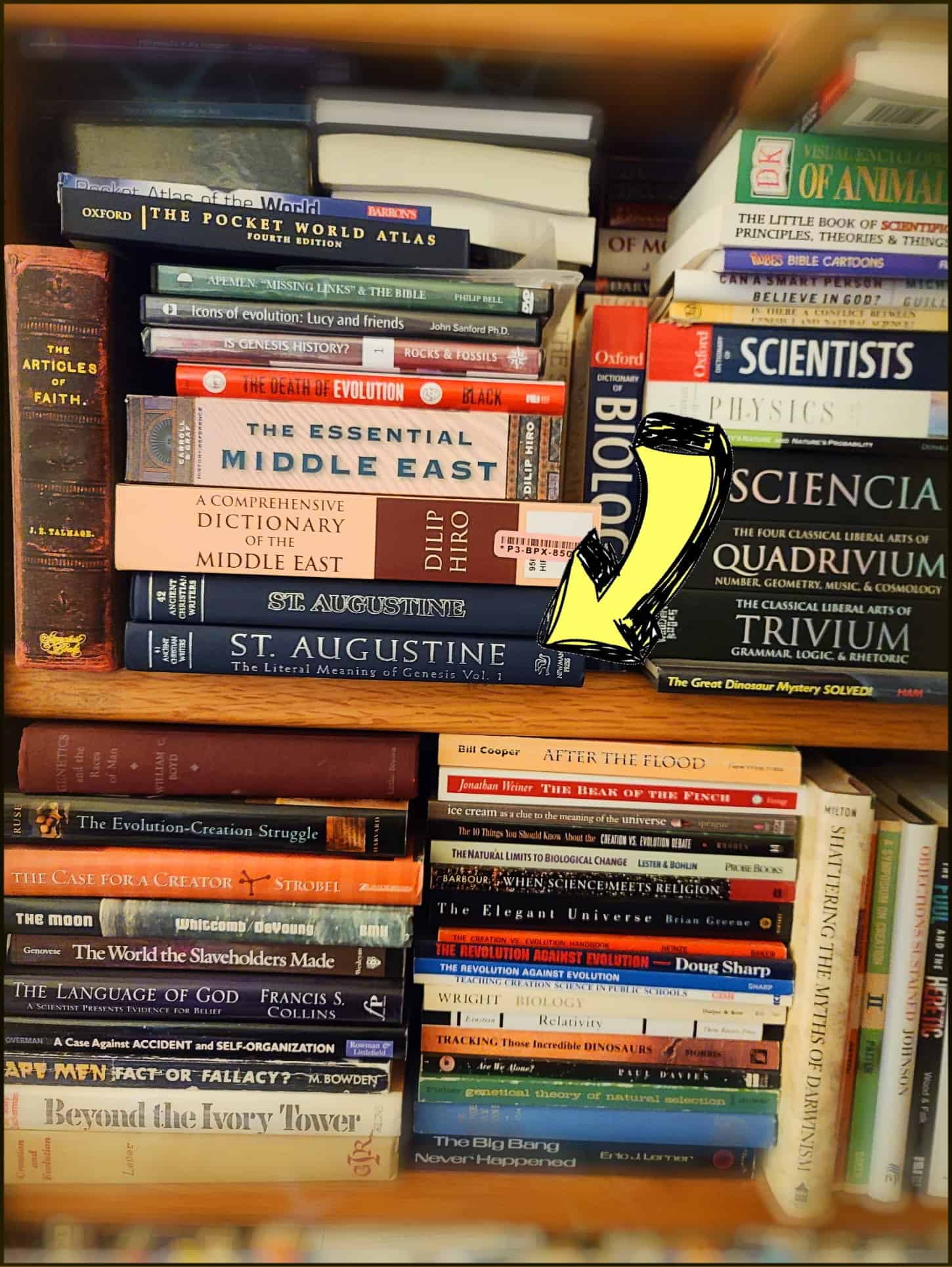(Just JUMP to the Unicorn section)
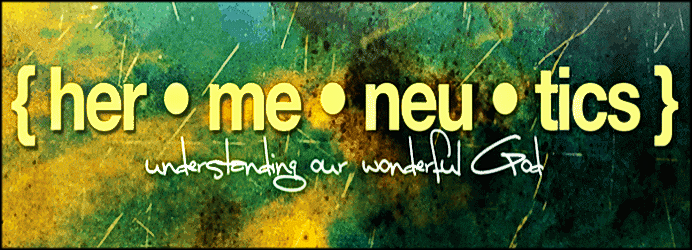 (Part 2 is HERE)
(Part 2 is HERE)
Let us open up with some verses that will help guide us into the subject:
Be diligent to present yourself approved to God, a worker who doesn’t need to be ashamed, correctly teaching the word of truth.
First of all, you should know this: No prophecy of Scripture comes from one’s own interpretation…
Solomon said in Proverbs 1:5-6 (truncated a bit):
a wise man will listen and increase his learning… for understanding a proverb or a parable… and their riddles.
So there seems to be a way to learn techniques that help us inculcate well, Scripture, and to represent it well to others. In theology, there is a technique called Hermeneutics, and while used quite often in Christian theology, these techniques “pre-date” Christ and should be looked at as truths imbued into nature by its Creator, like reason and logic. So let’s define these ideas a bit before continuing: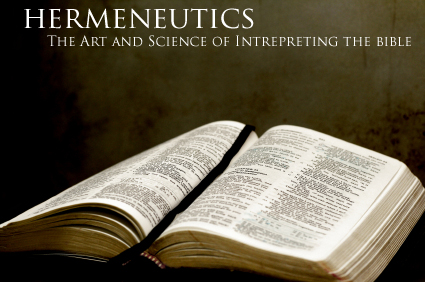
Hermeneutics – From the Greek hermeneutikos, “interpretation.” Hermeneutics is the science of the study and interpretation of Scripture, the branch of theology that prescribes rules by which the Bible should be interpreted. Biblical hermeneutics strives to formulate guidelines for studying Scripture that help recover the meaning a Biblical text had for its original hearers. (The Compact Dictionary of Doctrinal Words, 1988).
Underneath the “hermeneutic umbrella” is the idea of using the document in question to interpret the entire document.
Exegesis – (Gk. explanation) Critical exposition or explanation of the meaning of a scriptural passage in the context of the whole Bible. The reader of Scripture studies the word meanings and grammar of the text to discern what… was communicated, drawing the meaning out of the text rather than reading what he wants into the text (eisegesis).
Eisegesis – is the process of interpreting a text or portion of text in such a way that it introduces one’s own presuppositions, agendas, and/or biases into and onto the text.
Why do people insert their biases or anachronistic thinking into the Biblical text? We know why the unregenerate person does:
- …the mind set on the flesh is hostile toward God; for it does not subject itself to the law of God, for it is not even able to do so (Romans 8:7)
But even Christian thinkers will undutifully insert ideas into the text that the text itself does not call for. A neat story to further my point comes from a story retold from John Warwick Montgomery in Classical Apologetics
STORY OF A DEAD GUY
Once upon a time — note the mystical cast — there was a man who thought he was dead. His concerned wife and friends sent him to the friendly neighborhood psychiatrist determined to cure him by convincing him of one fact that contradicted his beliefs that he was dead. The fact that the psychiatrist decided to use was the simple truth that dead men do not bleed. He put his patient to work reading medical texts, observing autopsies, etc. After weeks of effort the patient finally said, “All right, all right! You’ve convinced me. Dead men do not bleed.” Whereupon the psychiatrist stuck him in the arm with a needle, and the blood flowed. The man looked down with a contorted, ashen face and cried, “Good Lord! Dead men bleed after all!”
Emotional prejudice IS NOT LIMITED to:
1) the dull-witted,
2) the illiterate,
3) and poorly educated.
Persons like:
4) Scientists,
5) Philosophers,
6) Politicians,
7) …and yes, even Theologians
…are not exempt from the vested interests and psychological prejudice that distort logical thinking. One of my favorite examples of this adding to the text that many do to this day can be found in Genesis. James Barr — one of the most trusted scholars on ancient Hebrew — long time Oriel professor at Oxford — and himself a neo-orthodox believer, rightly applied to Scripture a point of view he personally rejects:
…probably, so far as I know, there is no professor of Hebrew or Old Testament at any world-class university who does not believe that the writer(s) of Genesis [chapters] 1–11 intended to convey to their readers the ideas that:
1. creation took place in a series of six days which were the same as the days of 24 hours we now experience;
2. the figures contained in the Genesis genealogies provided by simple addition a chronology from the beginning of the world up to later stages in the biblical story;
3. Noah’s flood was understood to be world-wide and extinguished all human and animal life except for those in the ark.
You see, professor Barr asked some of the following questions that are simple questions one should ask coming to any text, especially ancient texts:
- Who was the writer?
- To whom were they writing?
- Is the choice of words, wording, or word order significant in this particular passage?
- What is the cultural, historical context?
- What was the author’s original intended meaning?
- How did the author’s contemporaries understand him?
- Why did he say it that way?
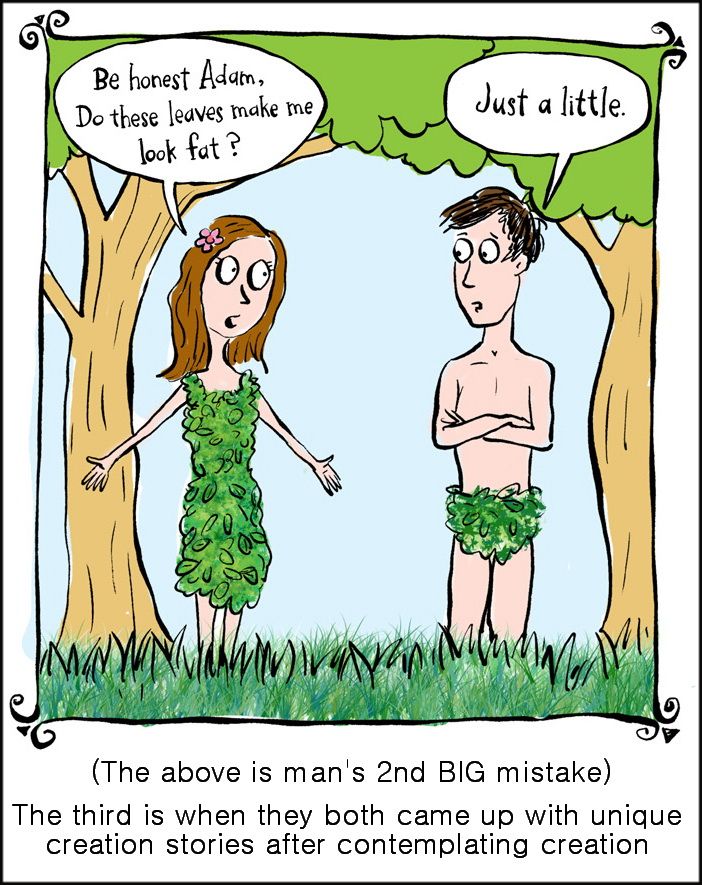 Bully for Barr! Who was no friend to this interpretation of Scripture by He was also an outspoken critic of conservative Evangelicalism (WIKI).
Bully for Barr! Who was no friend to this interpretation of Scripture by He was also an outspoken critic of conservative Evangelicalism (WIKI).
Why do we insist on putting our own thoughts and ideas into/onto the Bible, or why we allow the skeptic to think he has mastered God’s Holy word by placing onto Scripture anachronistic thinking and creating straw-man arguments which they then immediately tear down? With the skeptic, the belief in God is VERY personal… e-v-e-n if they don’t admit it. The question of the existence of God evokes deep emotional and psychological prejudice. People understand that the question of the existence of God is not one that is of neutral consequence. We understand intuitively, if not in terms of its full rational implication, that the existence of an eternal Creator before whom we are ultimately accountable and responsible is a matter that touches the very core of life.
How do we try and keep our, yes our, biases out so we “correctly teaching the word of truth”? And not abrogate control of the conversation to the skeptical friend or family member? One way is the old-fashioned way, the eight rules of interpretation. These 8-Rules pre-date Christ, that being said, they matured greatly under Christianity and are used across many disciplines to this day.
Greeks (Aristotle and Cicero) are the genesis of, Irenaeus used them when he wrote Against Heresies, which dealt with Gnosticism and other untruths. Every law court religiously follows them and honest theologians dare not violate them. Much false teaching is the result of violating one or more of these universal rules of interpretation. They were used by the master expositors of the Middle Ages all the way to Luther and the Reformation theologians who disproved Roman fallacies with them. These rules were involved in the great doctrinal debates of the theologians from the Council of Nice (324 A.D.) to the Council of Trent (1545-1563).
WHAT ARE THESE RULES?
1) Rule of Definition: Define the term or words being considered and then adhere to the defined meanings.
- Any study of Scripture . . . must begin with a study of words. (Protestant Biblical Interpretation, Ramm, Bernard, p. 129. W. A. Wilde Co.. Boston. 1956. )
- Define your terms and then keep to the terms defined. (The Structural Principles of the Bible, Marsh, F. E., p. 1. Kregel Publications.)
- In the last analysis, our theology finds its solid foundation only in the grammatical sense of Scripture. The interpreter should . . . conscientiously abide by the plain meaning of the words. (Principles of Biblical Interpretation, Berkhof, pp. 74?75, Baker Book House, 1960.)
- The Bible writers could not coin new words since they would not be understood, and were therefore forced to use those already in use. The content of meaning in these words is not to be determined by each individual expositor . . . to do so would be a method of interpretation [that is] a most vicious thing. (Studies in the Vocabulary of the Greek New Testament, bluest, Kenneth. pp. 30-37, Eerdmans Pub. Co., 1945.)
- [The author] confines the definitions strictly to their literal or idiomatic force; which, after all. will be found to form the best. and indeed the only safe and solid basis for theological deductions of any kind. (Young’s Analytical Concordance, Prefatory Note.)
2) Rule of Usage: Don’t add meaning to established words and terms. Ask what was the common usage in the culture at that time period.
- The whole Bible may be regarded as written for “the Jew first.” and its words and idioms ought to be rendered according to Hebrew usage. (Synonyms of the Old Testament, Girdlestone. R. B., p. 14.)
- Christ then accepted the usage He found existing. He did not alter it. (Pulpit Commentary, Matthew, V. 1, xxv. old edition.)
- Jesus of Nazareth was a Jew, spoke to and moved among Jews in Palestine …. He spoke first and directly to the Jews, and His words must have been intelligible to them… It was absolutely necessary to view that Life and Teaching in all its surroundings of place. society. popular life…. This would form not only the frame in which to set the picture of the Christ, but the very background of the picture itself. (The Life and Times of Jesus the Messiah, Edersheim, Alfred. V, 1, xii, Eerdmans Pub. Co., 1953.)
- In interpreting very many phrases and histories of the New Testament, it is not so much worth what we think of them from notions of our own . . . as in what sense these things were understood by the hearers and lookers on. according to the usual custom and vulgar dialect of the nation. (Bishop Lightfoot, quoted in The Vocabulary of the Greek New Testament, xii. Moulton & Mulligan, Eerdmans Pub. Co., 1959.)
3) Rule of Context: Avoid using words out of context. Context must define terms and how words are used.
- Many a passage of Scripture will not be understood at all without the help afforded by the context; for many a sentence derives all its point and force from the connection in which it stands. (Biblical Hermeneutics, Terry. M. S.. p. 117. 1896.)
- [Bible words] must be understood according to the requirements of the context. (Thayer’s Greek English Lexicon of the New Testament, p. 97.)
- Every word you read must be understood in the light of the words that come before and after it. (How to Make Sense, Flesch, Rudolph, p. 51, Harper & Brothers. 1959.)
- [Bible words] when used out of context . . . can prove almost anything. [Some interpreters] twist them . . . from a natural to a non?natural sense. (Irenaeus, second century church father, quoted in Inspiration and Interpretation, p. 50, Eerdmans Pub. Co., 1957.)
- The meaning must be gathered from the context. (Encyclopedia Britannica, Interpretation of Documents. V. 8, p. 912. 1959.)
4) Rule of Historical background: Don’t separate interpretation from historical investigation.
- Even the general reader must be aware that some knowledge of Jewish life and society at the time is requisite for the understanding of the Gospel history. (The Life and Times of Jesus the Messiah, Edersheim. Alfred. V. 1, xiii, Eerdmans Pub. Co., 1953.)
- The moment the student has in his mind what was in the mind of the author or authors of the Biblical books when these were written. he has interpreted the thought of Scripture …. If he adds anything of his own. it is not exegesis. (International Standard Bible Encyclopedia. V. 3. p. 1489. 1952.)
- Theological interpretation and historical investigation can never be separated from each other. . . . The strictest historical . . . scrutiny is an indispensable discipline to all Biblical theology. (A Theological Word Book of the Bible, 30 scholars. Preface, Macmillan Co., 1958.)
- I have said enough to show the part which the study of history necessarily plays in the intelligent study of the law as it is today …. Our only interest in the past is for the light it throws upon the present. (U.S. Supreme Court Justice Oliver Wendell Holmes, Jr., [sat on the bench from 1902 to 1932] quoted in The World of Law, V. 2. p. 630. Simon & Schuster. 1960.)
5) Rule of Logic: Be certain that words as interpreted agree with the overall premise.
- Interpretation is merely logical reasoning. (Encyclopedia Americana. V. 15. p. 261. 1953.)
- The use of reason in the interpretation of Scripture is everywhere to be assumed. The Bible comes to us in the forms of human language, and appeals to our reason . . . it invites investigation. and it is to be interpreted as we interpret any other volume by a rigid application of the same laws of language, and the same grammatical analysis. (Biblical Hermeneutics, Terry, M. S., p. 25. 1895.)
- What is the control we use to weed out false theological speculation? Certainly the control is logic and evidence . . . interpreters who have not had the sharpening experience of logic . . . may have improper notions of implication and evidence. Too frequently such a person uses a basis of appeal that is a notorious violation of the laws of logic and evidence. (Protestant Biblical Interpretation, Ramm, Bernard. pp. 151153, W. A. Wilde Co., 1956.)
- It is one of the most firmly established principles of law in England and in America that “a law means exactly what it says, and is to be interpreted and enforced exactly as it reads.” This is just as good a principle for interpreting the Bible as for interpreting law. (The Importance and Value of Proper Bible Study, Torrey. R. A., pp. 67-70, Moody Press, 1921.)
- Charles G. Finney, lawyer and theologian, is widely considered the greatest theologian and most successful revivalist since apostolic times. He was often in sharp conflict with the theologians of his day because they violated these rules of interpretation. Finney said he interpreted a Bible passage as he “would have understood the same or like passage in a law book” (Autobiography, pp. 42-43 ).
- Finney stressed the need for definition and logic in theology and said the Bible must be understood on “fair principles of interpretation such as would be admitted in a court of justice” (Systematic Theology. Preface, ix).
6) Rule of Precedent: Use the known and commonly accepted meanings of words, not obscure meanings for which there is no precedent.
- We must not violate the known usage of a word and invent another for which there is no precedent. (The Greek New Testament for English Readers, Alford, Dean, p. 1098, Moody Press.)
- The professional ability of lawyers in arguing a question of law, and the judges in deciding it, is thus chiefly occupied with a critical study of previous cases. in order to determine whether the previous cases really support some alleged doctrine. (Introduction to the Study of Law, p. 40, Woodruff, E. H., 1898.)
- The first thing he [the judge] does is to compare the case before him with precedents …. Back of precedents are the basic judicial conceptions which are postulates of judicial reasoning, and farther back are the habits of life, the institutions of society, in which those conceptions had their origin …. Precedents have so covered the ground that they fix the point of departure from which the labor of the judge begins. Almost invariably, his first step is to examine and compare them. It is a process of search, comparison. and little more. (U.S. Supreme Court Justice Benjamin Cardozo, [sat on the bench from 1902 to 1932], The Nature of the Judicial Process, quoted in The World of Law, V. 2. p. 671. Simon & Schuster, 1960.)
7) Rule of Unity: Even though many documents may be used there must be a general unity among them.
- [It is] fundamental to a true interpretation of the Scripture. viz.. that the parts of a document. law, or instrument are to be construed with reference to the significance of the whole. (Dean Abbot. Commentary on Matthew, Interpretation, p. 31. )
- Where a transaction is carried out by mean of several documents so that together they form part of a single whole, these documents are read together as one …. [They are to be so read], that, THAT construction is to be preferred which will render them consistent. (Interpretation of Documents, Sir Roland Burrows. p. 49. Lutterworth & Co., London. 1946.)
8) Rule of Inference: Base conclusions on what is already known and proven or can be reasonably implied from all known facts.
- In the law of evidence. an inference is a fact reasonably implied from another fact. It is a logical consequence. It is a process of reasoning. It derives a conclusion from a given fact or premise. It is the deduction of one proposition from another proposition. It is a conclusion drawn from evidence. An inferential fact or proposition. although not expressly stated. is sufficient to bind. This principle of interpretation is upheld by law courts. (Jesus proved the resurrection of the dead to the unbelieving Sadducees by this rule [Matt. 22:31. 32]. See Encyclopedia Britannia, V. 6. p. 615 [1952] and Black’s Law Dictionary, p. 436, Fourth Edition. West Pub. Co.. 1951. )
- A proposition of fact is proved when its truth is established by competent and satisfactory evidence. By competent evidence is meant such evidence as the nature of the thing to be proved admits. By satisfactory evidence is meant that amount of proof which ordinarily satisfies an unprejudiced mind beyond reasonable doubt. Scripture facts are therefore proved when they are established by that. kind and degree of evidence which would in the affairs of ordinary life satisfy the mind and conscience of a common man. When we have this kind and degree of evidence it is unreasonable to require more. (Systematic Theology, Strong. Augustus H.. p. 142. Judson Press. 1899.)
(Sources for the above definitions are as follows: GEORGETOWN CHRISTIAN FELLOWSHIP | APOLOGETIC INDEX | and, OUTFITTERS FOR ADVENTURE)
Is there an ancient example exemplifying a bit of what we are talking about? We find in Aristotle’s Poetics (25) the following:
They [the critics] start with some improbable presumption; and having so decreed it themselves, proceed to draw inferences, and censure the poet as though he had actually said whatever they happen to believe, if, his statement conflicts with their notion of things….
Whenever a word seems to imply some contradiction, it is necessary to reflect how many ways there may be of understanding it in the passage in question…. So it is probably the mistake of the critics that has given rise to the Problem….
So let us deal with four major missteps people make in coming to the Bible which also translate to the believer as a deeper study of God’s Word:
…Consider how confused a foreigner must be when he reads in a daily newspaper:
- “The prospectors made a strike yesterday up in the mountains.”
- “The union went on strike this morning.”
- “The batter made his third strike and was called out by the umpire.”
- “Strike up with the Star Spangled Banner.”
- “The fisherman got a good strike in the middle of the lake.”
Or consider what Dr. Edgar Andrews wrote about in his book, Who Made God:
When I first began visiting the USA regularly on business, I was struck by the huge versatility of one little word — check. Not only could you write a check to pay a bill and check that your airline hadn’t gone bankrupt overnight, but you could request your check at the end of a restaurant meal, check the boxes on your laundry list (or any other form for that matter), check your luggage at the airline desk, check in or check out of a hotel, check out a new product, check your hasty words when you got mad with some officious bureaucrat, and so on. Then, of course, the word lends itself beautifully to portmanteau usage, as in checklist, raincheck and checkup (I never did encounter checkdown but I’m still optimistic). Why, with a few more words like ‘check’ we could halve the weight of our dictionaries!
Another step that will enlighten our study time is
THE CULTURE GAP
If we don’t understand the various cultures of the time in which the Bible was written, we’ll never comprehend its meaning. For example, if we did not know anything about the Jewish culture at the time of Christ, the Gospel of Matthew would be very difficult to grasp. Concepts such as the Sabbath, Jewish rituals, the temple ceremonies, and other customs of the Jews must be understood within cultural context in order to gain the true meaning of the author’s ideas.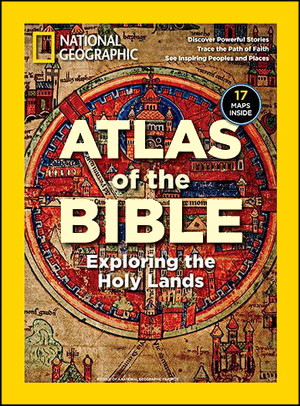
THE GEOGRAPHY GAP
A failure to be familiar with geography will hinder learning. For instance, in 1 Thessalonians 1:8 we read, “The Lord’s message rang out from you not only in Macedonia and Achaia—your faith in God has become known everywhere.” What is so remarkable about this text is that the message traveled so quickly. In order to understand how, it is necessary to know the geography.
Paul had just been there, and when he wrote the letter, very little time had passed. Paul had been with them for a couple of weeks, but their testimony had already spread far. How could that happen so fast? If you study the geography of the area you’ll find that the Ignatian Highway runs right through the middle of Thessalonica. It was the main concourse between the East and the West, and whatever happened there was passed all the way down the line.
THE HISTORY GAP
Knowing the history behind a passage will enhance our comprehension of what was written. In the Gospel of John, the whole key to understanding the interplay between Pilate and Jesus is based on the knowledge of history. John MacArthur in “How to Study the Bible” says about Pilate:
When Pilate came into the land with his emperor worship, it literally infuriated the Jews and their priests. So he was off to a bad start from the very beginning. Then he tried to pull something on the Jews, and when they caught him, they reported him to Rome, and he almost lost his job. Pilate was afraid of the Jews, and that’s why he let Christ be crucified. Why was he afraid? Because he already had a rotten track record, and his job was on the line.
Let’s apply, then, what we learned from these literary skills from Aristotle and others, and see where they lead us with supposed difficulties in the Bible. Aristotle’s dictum ~ the benefit of the doubt is afforded to the author of the document, not allowing it to be arrogated by the critic, is standard practice in court rooms to this day. That is, the benefit of the doubt to the document unless there is clear evidence that it is not what it claims to be. First we will start with a hypothetical, then go to the historical.
(See also: 3 Simple Guidelines You Need to Know for Bible Study)
STORY OF KEN
Let’s say you have a friend—let’s call him Ken—who lives in the Midwest. Ken had three very good friends—let’s call them Jim, John, and Mark—who live on the East Coast. One day Ken received a note from John saying that Jim was involved in a terrible car accident and died instantly. The following day, Ken received a letter from Mark saying that Jim was in an car accident and survived but died some time later.
At first glance, these two accounts seem to contradict each other. Either Jim died instantly in the accident or he did not.
Now, Ken knew that John and Mark were reliable sources, and he trusted them to give him an accurate account of the events surrounding their mutual friend’s death. As it turned out, John and Mark were both right, but there was missing information.
Jim was actually involved in two automobile accidents on the same day. In the first accident, Jim was badly injured but survived. A “Good Samaritan” stopped to help him, taking him to the nearest emergency room. However, on the way to the hospital, the driver of that vehicle was involved in a very serious accident, and as a result Jim was instantly killed. Hence, both accounts were correct. John was not aware of the first accident; he only knew about the second one that instantly killed Jim. Mark was only aware of the details of the first accident in which Jim survived, and not the second; he only knew that Jim died later that day. The apparent contradiction was solved when the rest of the truth was discovered.
STORY OF JUDAS
In the Gospel according to Matthew, he records the death Judas as suicide by hanging (Matthew 27:5). However, in Acts 1:18 Luke records the death of Judas as having occurred when he fell down and his body “burst open.” Some scholars have determined that these two divergent accounts are, irreconcilable; they assume that one or even both of these accounts are incorrect. If Matthew and Luke are trustworthy in giving an accurate accounts of the events, it certainly seems as if at least one of them is in error: Judas either fell down or he hung himself. Or is it another option?
If the branch from which Judas hung himself was dead and dry–and there are many trees that match this description even to this day on the brink of the canyon that tradition identifies the place where Judas died–it would take only one strong gust of wind to yank the heavy corpse and split the branch to which it was attached and plunge both with great force into the bottom of the chasm below. There is indication that a strong wind arose at the hour Christ died and ripped the great curtain inside the temple from top to bottom (Matthew 27:50C.)
These accounts are not contradictory, but mutually complementary. Judas hung himself exactly as Matthew affirms that he did. The account in Acts simply adds that Judas fell, and his body opened up at the middle and his intestines gushed out. This is the very thing one would expect of someone who hanged himself from a tree over a cliff and fell on sharp rocks below.
So this application and understanding that seemingly divergent tales may in fact be mutually complementary… if giving the benefit of the doubt to this ancient book. And you can see how teaching sound doctrine just is placed in us miraculously, is situ.
- “But you must say the things that are consistent with sound teaching” (Titus 2:1).
THERE IS ALSO GENRE (IN THE OLD TESTAMENT)
- Law is “God’s law,” they are the expressions of His sovereign will and character. The writings of Moses contain a lot of Law. God provided the Jews with many laws (619 or so). These laws defined the proper relationship with God to each others and the world (the alien)….
- History. Almost every OT book contains history. Some books of the Bible are grouped together and commonly referred to as the “History” (Joshua, Kings & Chronicles). These books tell us the history of the Jewish people from the time of the Judges through the Persian Empire…. In the NT, Acts contains some of the history of the early church, and the Gospels also have History as Jesus’ life is told as History….
- Wisdom Literature is focus on questions about the meaning of life (Job, Ecclesiastes), practical living, and common sense (Proverbs and some Psalms )….
- Poetry is found mostly in the Old Testament and is similar to modern poetry. Since it is a different language, “Hebrew,” the Bible’s poetry can be very different, because it does not translate into English very well….
- Prophecy is the type of literature that is often associated with predicting the future; however, it is also God’s words of “get with it” or else. Thus Prophecy also exposes sin and calls for repentance and obedience. It shows how God’s law can be applied to specific problems and situations, such as the repeated warnings to the Jews before their captivity….
- Apocalyptic Writing is a more specific form of prophecy. Apocalyptic writing is a type of literature that warns us of future events which, full meaning, is hidden to us for the time being….
(Source)
SOME MORE EXAMPLES
UNICORNS
Just the other day an atheist got on my YouTube account and posted this on Prager critiquing seculrism:
- Secularism makes more sense that some imaginary friend in the sky. They mention unicorns and dragons in the bible. Yes, I will take that seriously… NOT!
So lets apply some of what we learned (#’s 2 and 4 should suffice). Through the study of the word in question, “unicorn,” we come to find is only in the King James Bible, which is known for it’s “Queens language,” having been written in the early 1600’s. So what did the word “unicorn” mean in the 1600’s? We have a clue in Websters first edition (1828) of his dictionary.
(Take note that “bicorn” is defined in the 1828 edition as an animal with two horns) What does the Websters dictionary say today?
- …a mythical animal generally depicted with the body and head of a horse, the hind legs of a stag, the tail of a lion, and a single horn in the middle of the forehead.
They even are so kind as to furnish their readers with a picture (to the right). Let us apply another of the eight rules of interpretation (#’s 7 and 8 should do). Elsewhere in the KJV we read the following:
9 Will the unicorn be willing to serve thee, or abide by thy crib?
10 Canst thou bind the unicorn with his band in the furrow? or will he harrow the valleys after thee?
11 Wilt thou trust him, because his strength is great? or wilt thou leave thy labour to him?
12 Wilt thou believe him, that he will bring home thy seed, and gather it into thy barn?
This verse mentions 3 main attributes about the unicorn:
1) strength is great,
2) useless for agricultural work,
3) refuses to serve man
- describes unicorns skipping like calves
- mentions them traveling like bullocks, and bleeding when they die.
Horses have been tamed for agricultural work, so the above descriptions fit something else. Let’s use the term as was used in the day of its writing to define the meaning.
HERE IS A UNICORN:
HERE IS A BICORN:
Definitely not a creature typically see doing agricultural work. You see, what the skeptic has done is taken a word as defined today and ripped it from it’s historical context, placed it onto another culture/time period (built a straw-man), and then attack it. The argument really shouldn’t involve us at all. It is all going on in the head of the skeptic… he is arguing with himself! All you have to call for is lithium for this bi-polar person. Since, however, I am a young earth creationist (YEC), I would even posit that Job was viewing the Elasmotherium (Greek for “plated beast”; pronounced ell-azz-moe-THEE-ree-um):
But whether you posit the ELASMOTHERIUM (pictured above), or a simple rhino… this is using a lane-line guide to look at — not only the Bible (but especially the Bible ~ *smile*), but any ancient text.
GOD KILLS CHILDREN
Okay, let’s move onto another challenge, and this comes from 2 KINGS 2:23-25, see my LONG VERSION as well as my SHORT VERSION of the below:
2 KINGS 2:23-25
He went up from there to Bethel, and while he was going up on the way, some small boys came out of the city and jeered at him, saying, “Go up, you baldhead! Go up, you baldhead!” And he turned around, and when he saw them, he cursed them in the name of the LORD. And two she-bears came out of the woods and tore forty-two of the boys. From there he went on to Mount Carmel, and from there he returned to Samaria.
Here the skeptic posits God’s wrath on 42 children, presumably innocent in that their greatest offense was calling someone a “bald-head.” It would be similar to a guy being called “four-eyes” by a bunch of kids and then whipping out an AK-47 and mowing them down… and then expecting you to view him as a moral agent. In accessing the following books,
- The New Manners & Customs of Bible Times;
- Manners and Customs in the Bible: An Illustrated Guide to Daily Life in Bible Times;
- An Introduction to the Old Testament;
- The IVP Bible Background Commentary: Old Testament;
- Old Testament Survey: The Message, Form, and Background of the Old Testament;
- A Popular Survey of the Old Testament;
- New International Encyclopedia of Bible Difficulties;
- Hard Sayings of the Bible;
- When Critics Ask: A Popular Handbook on Bible Difficulties.
I noticed something was missing. That is, a bit more of what is not said in the text, but we can assume using and accessing what any historical literary critic would with the principles that predate Christ — mentioned in the above “latte” link. Mind you, many of the responses in my home library that I came across were great, and, in fact they made me dig a bit further. (I do not want the reader to think that I place myself on a higher academic level that these fine theologians and professors.) Three big points stuck out from texts I reviewed:
“LITTLE KIDS”
“Little children” is an unfortunate translation. The Hebrew expression neurim qetannim is best rendered “young lads” or “young men.” From numerous examples where ages are specified in the Old Testament, we know that these were boys from twelve to thirty years old. One of these words described Isaac at his sacrifice in Genesis 22:12, when he was easily in his early twenties. It described Joseph in Genesis 37:2 when he was seventeen years old. In fact, the same word described army men in 1 Kings 20:14-15…these are young men ages between twelve and thirty.” (Hard Sayings of the Bible)
HARMLESS TEASING/PUBLIC SAFETY
A careful study of this incident in context shows that it was far more serious than a “mild personal offense.” It was a situation of serious public danger, quite as grave as the large youth gangs that roam the ghetto sections of our modern American cities. If these young hoodlums were ranging about in packs of fifty or more, derisive toward respectable adults and ready to mock even a well-known man of God, there is no telling what violence they might have inflicted on the citizenry of the religious center of the kingdom of Israel (as Bethel was), had they been allowed to continue their riotous course. (Encyclopedia of Bible Difficulties)
The harmless “teasing” was hardly that–they were direct confrontation between the forces of Baal and the prophet of YHWH that had just healed the water supply (casting doubt on the power and beneficence of Baal!). This was a mass demonstration (if 42 were mauled, how many people were in the crowd to begin with? 50? 100? 400?):
“As Elisha was traveling from Jericho to Bethel several dozen youths (young men, not children) confronted him. Perhaps they were young false prophets of Baal. Their jeering, recorded in the slang of their day, implied that if Elisha were a great prophet of the Lord, as Elijah was, he should go on up into heaven as Elijah reportedly had done. The epithet baldhead may allude to lepers who had to shave their heads and were considered detestable outcasts. Or it may simply have been a form of scorn, for baldness was undesirable (cf. Isa. 3:17, 24). Since it was customary for men to cover their heads, the young men probably could not tell if Elisha was bald or not. They regarded God’s prophet with contempt….Elisha then called down a curse on the villains. This cursing stemmed not from Elisha pride but from their disrespect for the Lord as reflected in their treatment of His spokesman (cf. 1:9-14). Again God used wild animals to execute His judgment (cf., e.g., 1 Kings 13:24). That 42 men were mauled by the two bears suggests that a mass demonstration had been organized against God and Elisha.” [Bible Knowledge Commentary]
ELISHA’S MISSION-HELPING NEEDY
The chapter closes with two miracles of Elisha. These immediately established the character of his ministry–his would be a helping ministry to those in need, but one that would brook no disrespect for God and his earthly representatives. In the case of Jericho, though the city had been rebuilt (with difficulty) in the days of Ahab (1 Kings 16:34, q.v.), it had remained unproductive. Apparently the water still lay under Joshua’s curse (cf. Josh 6:26), so that both citizenry and land suffered greatly (v. 19). Elisha’s miracle fully removed the age-old judgment, thus allowing a new era to dawn on this area (vv. 20-22). Interestingly Elisha wrought the cure through means supplied by the people of Jericho so that their faith might be strengthened through submission and active participation in God’s cleansing work. (Encyclopedia of Bible Difficulties)
MORE CAN BE FOUND HERE:
All good stuff, but something is missing. During the course of the debate I pieced together some truths, using culture and history as keys to a “crime scene.” Again, I want to stress what some of the habits were in this small town where this group of people came from:
Molech was a Canaanite underworld deity represented as an upright, bull-headed idol with human body in whose belly a fire was stoked and in whose arms a child was placed that would be burnt to death. It was not just unwanted children who were sacrificed. Plutarch reports that during the Phoenician (Canaanite) sacrifices, “the whole area before the statue was filled with a loud noise of flutes and drums so that the cries and wailing should not reach the ears of the people.”
Sean McDowell and Jonathan Morrow, Is God Just a Human Invention? And Seventeen Other Questions Raised by the New Atheists (Grand Rapids, MI: Kregel Publications, 2010), 177.
This crowd of persons was older than what is typically posited by skeptics. Secondly, this group was a very bad lot. But didn’t explain why bald-head was egregious enough for God to call 42 scurvy bastards to judgement. To be fair, I sympathize with the skeptic here. That being said, there is more to the story. I want us to view some artistic drawings of historical figures from Israels history: priests, prophets, spiritual leaders, and even Flavius Josephus.
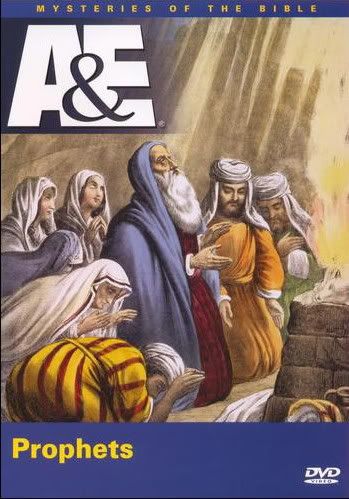
What did you notice above in the cover to an A&E documentary? Yup, a turban or covering of some sort as well as a cloak which covers the heads of the priests and prophets. Take note of the below as well.





I posted so many images to drive a point home in our mind. The prophet Elisha would have had a couple of things that changes this story from simple name calling to an assault. Firstly, he wouldn’t have been alone, he would have had some people attached to him that would lay down their lives to protect him. And secondly, he would have had a head covering on, especially since he was returning from a “priestly” intervention.
One last point before we bullet point the complete idea behind the Holy and Rightful judgement from the Judge of all mankind. There were 42 persons killed by two bears. Obviously this would require many more than 42 people. Why? What happens when you have a group of ten people and a bear comes crashing out of the bushes in preparation to attack? Every one will immediately scatter! In the debate I pointed out that freezing 42 people and allowing the bears time to go down the line to kill each one would be even more of a miracle than this skeptic would want to allow. So the common sense position would require a large crowd and some sort of terrain to cut off escape. So the crowd would probably have been at least a few hundred.
Also, this holy man of God was coming back from a “mission,” he would have had an entourage with him, as well as having some sort of head-covering on as pictured above. So, what do these cultural and historical points cause us to rightly assume? That the crowd could not see that the prophet was bald. Which means they would have had to of gotten physical — forcefully removing the head covering. Which means also that the men with the prophet Elisha would have also been overpowered. So lets bullet point the points that undermine the skeptics viewpoint.
✔ The crowd was in their late teens to early twenties;
✔ they were antisemitic (this is known from most of the previous passages and books);
✔ they were from a violently cultic city;
✔ the crowd was large;
And unique to me having shown that there is no way for the crowd to know Elisha was bald unless they had already attacked him and his entourage, is this point:
✔ the crowd had already turned violent.
These points caused God in his foreknowledge to protect the prophet and send in nature to disperse the crowd. Nature is not kind, and the death of these men were done by a just Judge. This explains the actions of a just God better than many of the references I read.
SO IN CONCLUSION,
a knowledge of history, culture, language, the words being used and their history, and the like… all contribute to the “sound doctrine” we are called to express.
Because otherwise, we will be the time-keepers in the story below, wronger and wronger all the time:
THE BELL TOWER
Have you ever heard the story of a man who used to go to work at a factory and every day would stop outside a clockmaker’s store to synchronize his watch with the clock outside? At the end of several days the clockmaker stopped him and said, “Excuse me, sir, I do have a question for you. I see that every day you stop and adjust your watch with my clock. What kind of work do you do?” The man said, “I’m embarrassed to tell you this; I keep the time at the factory nearby, and I have to ring the bell at four o clock every afternoon when it is time for the people to go home. My watch doesn’t work very well, so I synchronize it with your clock.” The clockmaker says, “I’ve got bad news for you. My clock doesn’t work very well either, so I synchronize it with the bell that I hear from the factory at 4:00 every afternoon.” If you’ll pardon the grammar, what happens when two wrong watches correct themselves by each other? They will get wronger and wronger all the time. Even a clock that doesn’t work may show you the right time twice a day…but it’s not because it’s keeping time!
Ravi Zacharias, “Address to the United Nations’ Prayer Breakfast.”
HERE IS THE PDF of the below
- (Short description) There is a band called Five Finger Death Punch… in this short hand-out I explain how to get the most out of Bible reading. This was [again] a handout for a Sunday school class I filled in for at Grace Baptist. This class I taught was on Hermeneutics and dissecting Scripture through exegesis.
Tips On How To Study – Well – Your Bible by Papa Giorgio
A book used as a guide to some of the above is: Unshakeable Foundations

